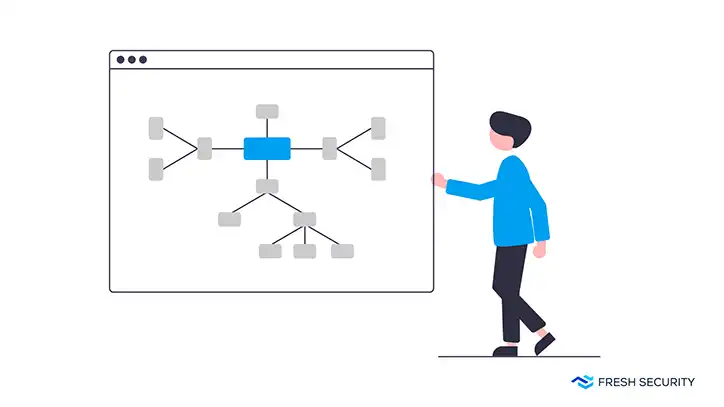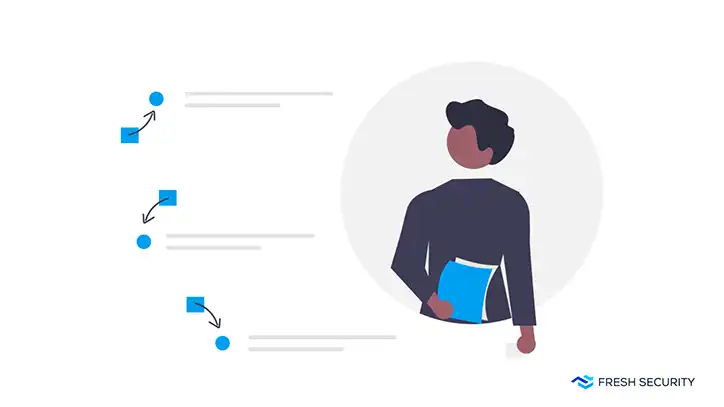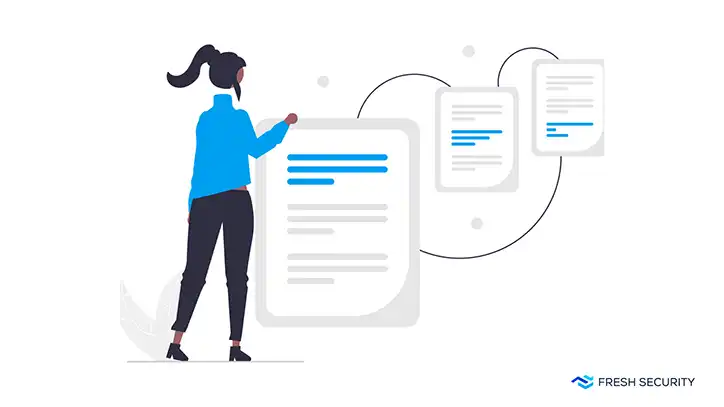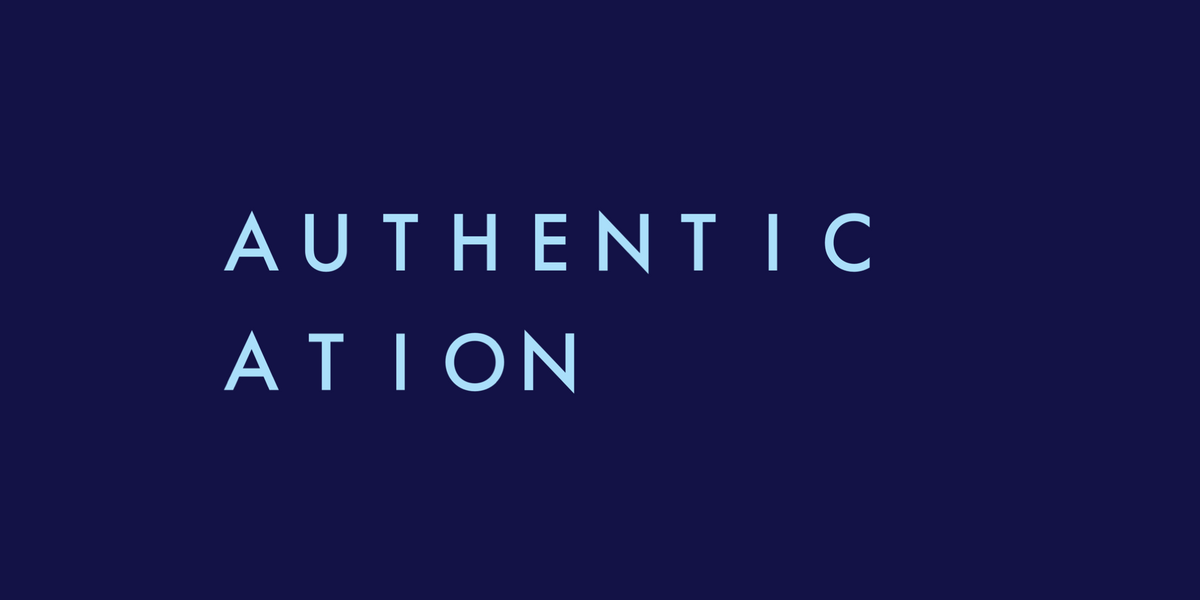2020 was when the world went remote, and since then, there has been no looking back. With more and more businesses relying on the internet for their daily activities, data breaches have risen due to inadequate measures. During that time, it has been estimated that the average cost of data breaches has increased to $4.24 million — the highest in 17 years! The primary reasons are cloud migration and compromised employees' credentials that eventually allow hackers to access a company’s network. This only shows how important it is to use a cyber security framework and put processes in place to protect your business.
That being said, what exactly is a cyber security framework?

What is a Cyber Security Framework?
It’s basically a set of guidelines put down to protect the company’s virtual assets. Security frameworks work on guiding principles from the top security advisors and organizations in the world. But they can be modified based on the assets and requirements of the organization
Now, let’s get into the specifics of why you need a cyber security framework and how it can help your business.

Why Does Your Business Need a Security Framework?
As an industry, the cyber security industry is an extremely trendy one. Why, you ask? Simply because there’s so much happening all the time. Not a month goes by without headlines detailing ingenious ways in which ‘hackers’ are stealing confidential data and selling it for millions of dollars in the black market. It’s always moving from one new type of attack to another and will continue to do so.
For example, just a few months back in July 2021, news outlets reported a ransomware attack on Sweden’s largest grocery chain, COOP. The infiltration was so efficient that they didn’t even know they were downloading ransomware. As a result, hundreds of stores were temporarily shut down, and millions were lost. Sounds like a nightmare, right? It is!
As a small and mid-sized business owner, managing your business and handling these potential threats is challenging. This is where having a security framework will help you. It basically grounds you and your business and ensures that you have a set of measures set in place to prevent you in the case of a potential or ongoing attack.
It helps assess the types of assets you own - local, offline, and cloud data. It sets up pillars of security that withstand potential cyber security attacks. It also makes sure that your business’s IT measures are in line with the regulatory requirements of your industry. Cybersecurity frameworks are generic in their own sense. Still, in today’s day and age, there are specific security frameworks for each sector. For example, the requirements of the health industry will differ from that of the software industry.

What Cyber Security Frameworks are There?
As mentioned earlier, the kind of security framework you choose to implement depends on the industry your business belongs to. Frameworks have practically the same steps but prioritize different aspects depending on industry needs.
Since security compliance measures are to be followed, it’s easier to look up your industry’s dedicated set of guidelines. The guiding principles of any security compliance framework are:
- identification of assets
- protection from threats
- detection of threats
- response to threats
- recovering breached assets
As there are so many frameworks, another issue that has come up is that companies just implement the basic frameworks. Instead, they must personalize them for their business — leading to increased vulnerability.
However, some of the well-known cyber security frameworks currently in the market are:
- Center for Internet Security (CIS)
- NIST Cybersecurity Framework (CSF)
- UK Cyber Essentials framework
- HIPAA
- ISO/IEC 27001
- Payment Card Industry (PCI) frameworks
- and many more.
NIST and CIS are the most used ones and help build organizations’ frameworks based on the inventory assets and potential vulnerabilities.

What Does a Security Framework Cover?
Every security framework out there is unique because of how it is specialized. Despite that, there are a few core elements that the security compliance framework will have, and they are:
- Identification: You’ll receive specific guidelines on how to narrow down your cyber security goals and document them. It depends on your business’s goals, the kind of assets you have, and the industry you are in. This also means that you need to account for your entire business network — not just your office.
- Protection: This element helps you educate and inform your employees about how the business assets can be protected. The framework's objectives can be devised, and the concerned are trained on how to go about it. This also helps keep all the employees in the loop about the stringent rules they need to follow to protect their information.
- Detection: This is one of the trickiest parts because people just don’t know they are being attacked more often than not. While continuous monitoring is a must, sometimes malware can slip through the cracks. This is why it’s essential to be able to identify the threat as soon as it occurs since it dictates the following steps.
- Response: Generic responses to cyber-attacks don’t cut it anymore. Here, it’s essential to understand the kind of attack and redirect effort to block it out. This also involves managing the communication between the concerned and responding immediately.
- Recovering: This step is crucial in building back the cyber security defences of the company. It helps the system learn from the recent attack and restores the security framework’s existing capacity.

Why Does Fresh Security Use the CIS Security Controls Framework?
At Fresh Security, we’ve specifically chosen the CIS Security framework because of the simplicity that it offers. CIS security framework is one of the most robust frameworks out there. It’s very well-known for its ability to prioritize the top-level security defences that an enterprise would need.
Top government organizations are also known to use this framework because of its ‘mission-critical’ approach. The controls are devised so that in the case of an attack, many avenues are blocked and where the attack does get through, you have a consistent approach to redirect efforts and mitigate the attack. It’s a high-value payoff approach and certainly keeps enterprise owners happy.
The security compliance framework is straightforward to understand, with little jargon making it highly accessible to its readers. It consisted of 18 security controls and was created in the late 2000s. Since then, it has been constantly updated by industry professionals. Being the output of a consortium, it’s a highly trusted security framework. We believe it’s the best foundational framework you can find.
The CIS controls consist of guidelines for every aspect of your network’s security. Right from hardware and software management to data security and vulnerability management, it’s got it all. It’s more focused on the organization's activities than who controls them, resulting in better and more objective cyber security.

How to Implement a Cyber Security Framework?
The first step in implementing a security framework is to identify the assets you have. This is why asset inventory management comes into the picture. Once that is done, the initial groundwork (Level 1) is laid down. In some cases, it takes several months to put this in place as companies are rarely starting from a blank page and have existing hardware and software in use.
A baseline security process, created from the framework, includes aspects such as:
- inventory management
- user management
- firewall protection
- setting up access controls
- software upgrades and patching
- implementing anti-virus software
The process of implementing a security framework involves a cyber security advisor working with an IT professional to figure out the technicalities and a legal advisor to sign off the security policies and compliance checklist created during the process.
It’s always best to start from a baseline since it provides a common starting point for any changes and improvements made later. Once the initial baseline is in place, changes can be made incrementally. It also means that the improvements that are made are continuously seen. However, building a high-level cyber security framework is an ongoing process, which takes time and effort and is achievable in due course.
A Final Word
We hope you have a clear idea of why you need a cyber security framework, how to implement one, and what goes on in the process. It’s always important to remember that cyber security attacks as such will never go ‘out of fashion.’ Instead, we need to be prepared for any potential threats that come our way and build up the right pillars of defence. Spending more time on building the foundation will save you more time and money in the future.


